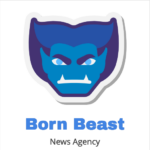Improved Readability and UX
One of the biggest benefits of Tiny URLs is readability. Extended URLs are hard to remember and seem professionally in emails, social media, and printed documents. Standard URLs with hundreds of letters, slashes, and symbols might confuse readers and deter clicks. Tiny URLs are clear, manageable, and attractive.
Simple design improves user experience, especially on Twitter and LinkedIn, where space is restricted and clarity is key. A shorter URL is easier to utilize in text messages, posters, and conversations.
Optimizing Digital Platform Space
Many social media networks limit character count. For instance, Twitter limits tweets to 280 characters. A lengthy URL might take up a lot of text in such little areas, leaving little room for context or message. Tiny URLs let users make the most of their space by allowing them to add context, hashtags, and calls-to-action.
Tiny URLs can assist multimedia material like infographics and YouTube video descriptions maintain visual harmony and avoid distraction.
Monitoring and Analysis
After aesthetics and ease, Tiny URLs’ capacity to track and evaluate link performance is their biggest benefit. Most URL shorteners include detailed information on clicks, user location, devices, and referral sources. Marketers, enterprises, and content providers can use this data to assess campaign performance.
By analysing Tiny URLs shared across platforms, marketers may discover which channels drive traffic and conversions. Improved decision-making, marketing optimization, and ROI result from this information.
Trust and Brand Recognition
Modern URL shorteners let customers add brand names, keywords, and campaign titles to Tiny URLs. Users trust branded short links like yourbrand.link/summerdeal because they appear professional. Customized URLs are trusted more than generic or random ones, minimizing the risk of spam or dangerous links.
Branded Tiny URLs boost brand awareness. A branded short link boosts brand awareness and memory when shared or reposted, making it a powerful digital branding tool.
Aiding Offline Engagement
Tiny URLs are handy offline too. Long URLs on business cards, leaflets, pamphlets, and posters are hard to see or type. However, Tiny URLs are easier to type into browsers, enhancing audience engagement. A memorable short link lets you access Tiny URLs without scanning QR codes in print documents.
Staying away from broken links
Many email and messaging services truncate long URLs, especially if the message is reformatted or forwarded. Broken connections and user frustration might result in traffic loss. Tiny URLs ensure a smooth user experience across communication platforms since they are brief and less prone to line breaks.
Conclusion
In a digital and mobile-first world, Tiny URLs are strategic tools, not merely a trend. Tiny URLs’ benefits include improved readability, space conservation, comprehensive tracking, and trust. Business owners, content creators, marketers, and regular users may improve online efficacy and communication clarity by using URL shortening. As the digital world evolves, Tiny URLs will be essential for efficient, effective, and powerful link sharing.
